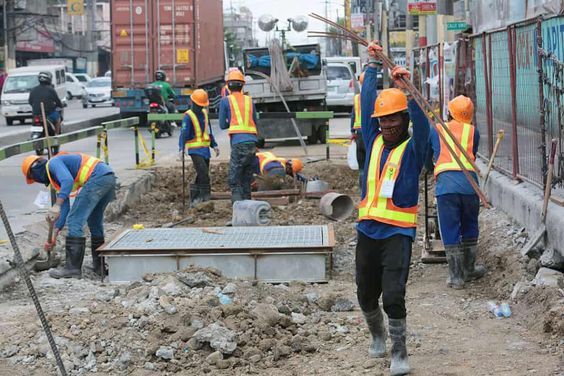Santiago F. Dumlao Jr. l May1, 2024 l Business Mirror

LET us be minded, if there is one good news about the government (I hear and read too many bad news items), it is the relentless pursuit of building and reinforcing infrastructure projects around the country. Its build, build more program augurs well for establishing the foundation for future economic growth. For where infrastructure goes, economic activity follows.
When we talk of infrastructure, we refer particularly to four sectors: energy or power; transportation; telecommunications; and water and sanitation. Investments in these sectors are almost always big ticket items and have been pursued through public sector financing, e.g. tax and non-tax revenue, public bond financing, borrowings, official development assistance and grants.
The magnitude of the need for infrastructure financing, however, requires private sector financing which is the infrastructure investment gap desired to be filled up.
To put this infrastructure investment gap in context, I share with you portions of the presentation by ADB Special Initiatives and Funds Director Adrian Torres at a recent training workshop co-sponsored by the Association of Credit Rating Agencies in Asia and the Capital Markets Development Foundation Inc. last April 18 to April 19, 2024:
• “Developing Asia needs $26 trillion, or $1.7 trillion per year, for infrastructure investment in 2016-2030.”
• “Estimates were made pre-Covid and likely to significantly increase in future.”
• “Developing Asian economies will need to invest greater than 5 percent of their GDP over the next decade, in terms of both building new capacity and maintaining and replacing existing structures.”
• “As a percentage of gross domestic product (GDP), investment needs across regions:
• Pacific—9.1 percent
• South Asia—8.8 percent
• Central Asia—7.8 percent
• Southeast Asia—5.7 percent
• East Asia—5.2 percent.”
“In terms of sectors, power accounts for 56 percent of needed infrastructure investments with transport 32 percent, telecommunications 9 percent, and water and sanitation accounting for 3 percent.”
The adverse consequences of climate change—such as the intense heat we’re experiencing in the country right now—has upped the costs of mitigating climate change and climate infrastructure investments. For Asia and the Pacific, these are “estimated at $200 billion per year, largely needed for investments in the power sector (renewable energy, smart grids and energy efficiency).”
For example, the baseline estimate of investment needs for power (2016-2030) was $11.69 trillion. Climate-adjusted estimates have increased to $14.73 trillion. Climate change indeed wreaks financial havoc.
Torres points to a “strong need for policy reforms” and this is where the reader of this article—presumably a serious reform-minded advocate in the business community—can look for the opportunity to participate in somehow, someway, advancing any of these policy reforms.
Torres makes these proposals:
“Policy changes have to be made to bridge the infrastructure gap and widen the financing sources:
ª public finance reforms to widen the fiscal space
• exploration of innovative financing methods such as infrastructure bonds
• institutional and regulatory reforms such as enabling environment for PPPs
• deepening of the region’s bond markets to unlock long-term funding by institutional investors
• encouraging innovation and the use of technology in infrastructure development to reduce costs and improve efficiency
• developing comprehensive, long-term infrastructure plans to provide certainty for investors and help prioritize projects based on their economic and social benefits.”
Let’s read through the proposals again.
They are addressed to members of the Financial Executives Institute of the Philippines (Finex), Capital Market Development Council, Investment House Association of the Philippines and as well as our regulatory authorities.
And, lest we forget, there’s a Philippine Public-Private Partnership (PPP) Center that’s a catalyst to public-private infrastructure ventures re-invigorated with a new reformed PPP Code (Republic Act 11966), with a fresh-from-the-oven implementing rules and regulations approved last month.
***Santiago F. Dumlao Jr. is the Secretary General of the Association of Credit Rating Agencies in Asia, chairman of the market governance board and market policy committee of the Philippine Dealing & Exchange Corp. and former Finex president.
His views do not necessarily reflect those of the BusinessMirror and FINEX. Photo from Pinterest.

